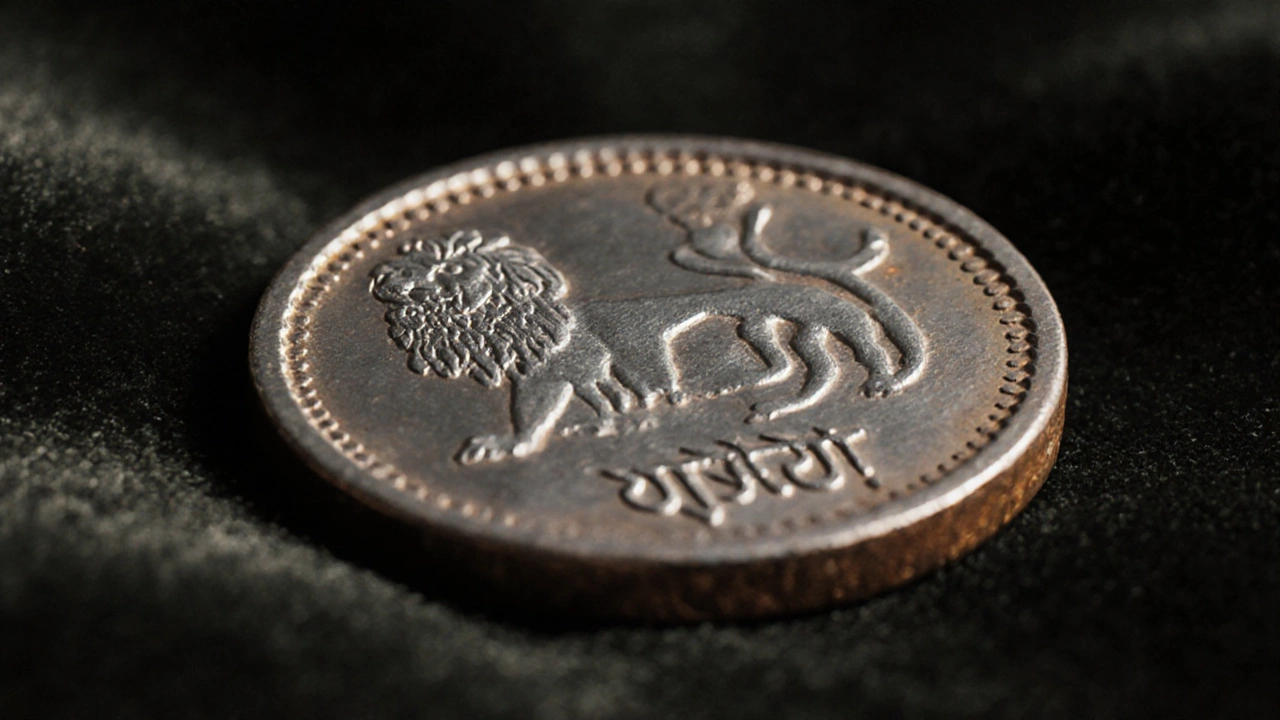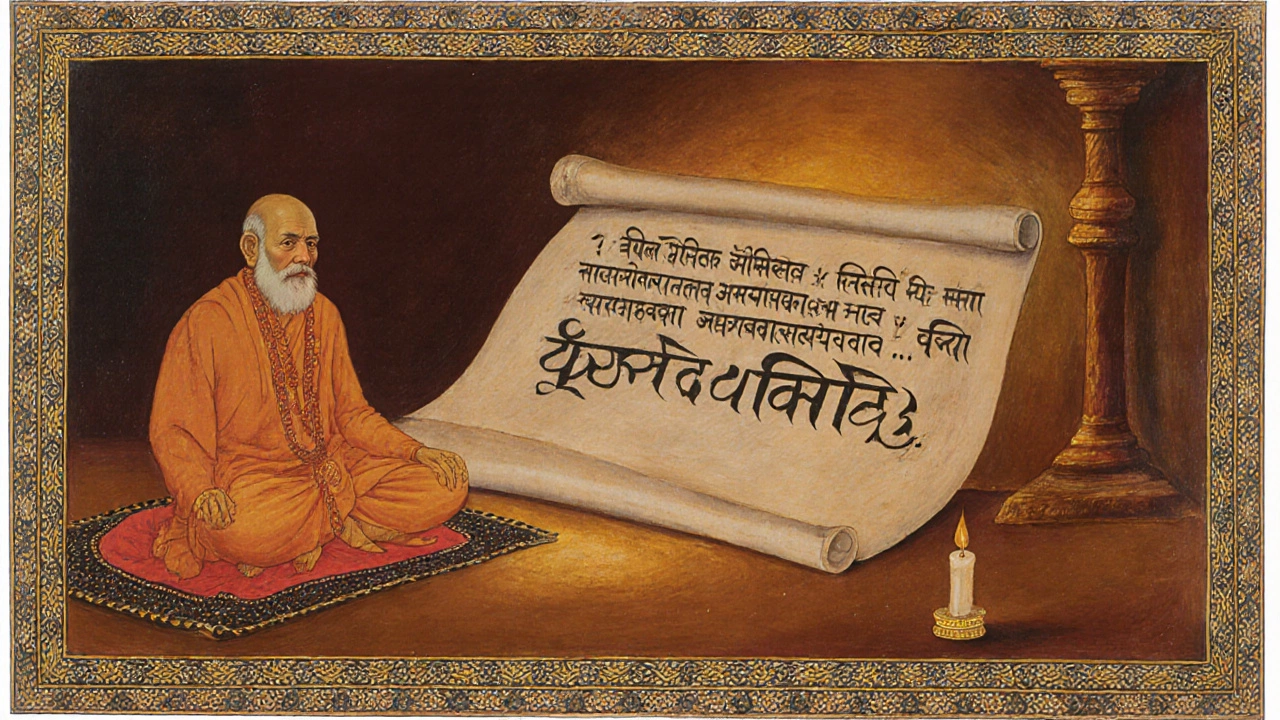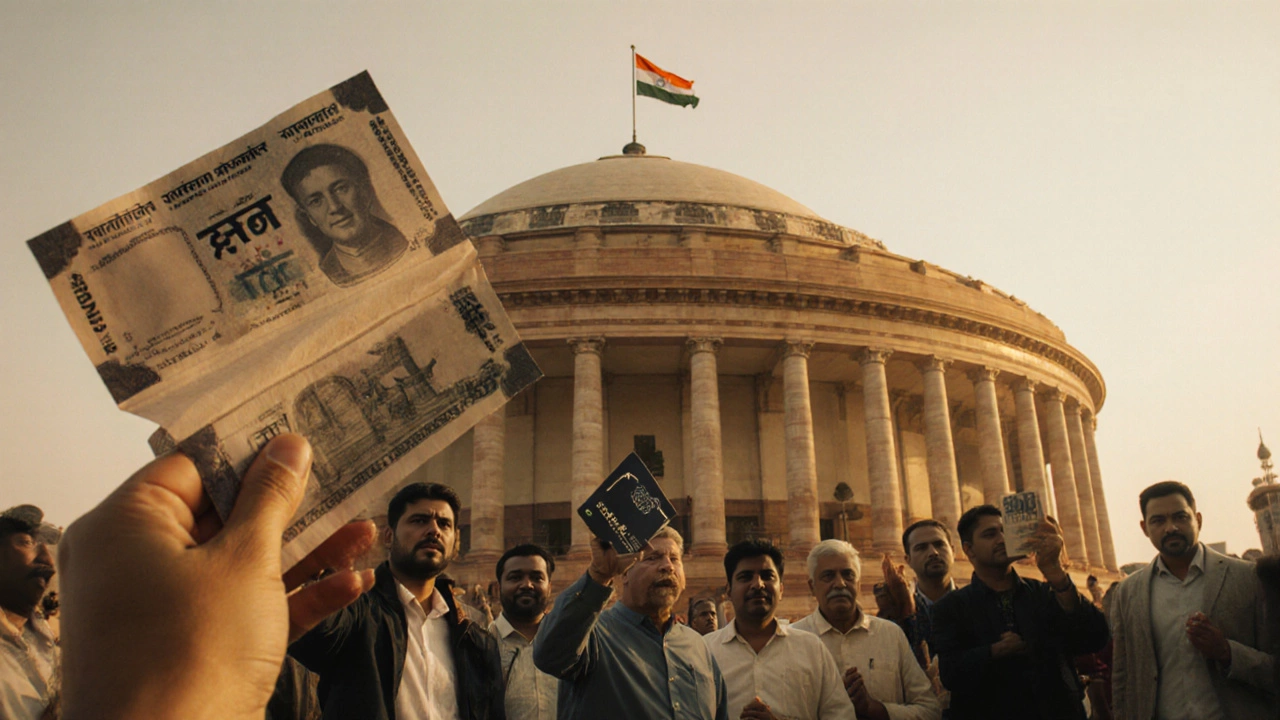What is India's Famous Quote? The Story Behind 'Satyameva Jayate'
 Oct, 9 2025
Oct, 9 2025
India's National Motto Explorer
About Satyameva Jayate
"Satyameva Jayate" means "Truth alone triumphs." This ancient Sanskrit phrase from the Mundaka Upanishad became India's national motto in 1950.
Motto in Devanagari
सत्यमेव जयते
Transliteration
Satyameva Jayate
Pronunciation Guide
Sa-tya-me-va Ja-ya-te
Stress on 'tya' and 'ya'
Quick Facts
- Meaning: Truth alone triumphs
- Origin: Mundaka Upanishad (~600 BCE)
- Adopted: 1950 as national motto
- Common Places: Coins, banknotes, passports
- Related Phrases: Vande Mataram, Jai Hind
Origin & Significance
Derived from the Mundaka Upanishad, this phrase reflects ancient Indian philosophy emphasizing truth and integrity. After India's independence, it was adopted as the national motto to represent the country's commitment to honesty and justice.
It appears on the National Emblem of India, Indian currency, and official documents, serving as a constant reminder of these core values.
Compare with Other Phrases
| Phrase | Language | Literal Meaning | First Used In |
|---|---|---|---|
| Satyameva Jayate | Sanskrit | Truth alone triumphs | Mundaka Upanishad (~600 BCE) |
| Vande Mataram | Sanskrit/Bengali | I salute the motherland | Bankim Chandra Chatterjee’s novel (1882) |
| Jai Hind | Hindi | Victory to India | Indian National Army (1942) |
Usage Tips
Use this motto respectfully in formal contexts such as speeches or writings about integrity. Avoid casual or sarcastic use, as many Indians hold it in high regard.
Key Takeaways
- India’s most famous quote is Satyameva Jayate, meaning “Truth alone triumphs.”
- The phrase originates from the ancient Mundaka Upanishad, a Vedic text.
- It was adopted as the national motto in 1950 and appears on the National Emblem of India and the Indian Rupee.
- Other iconic Indian phrases include Vande Mataram and Jai Hind.
- Knowing the correct pronunciation and context helps you use the motto respectfully.
The Quote and Its Literal Meaning
When you look at an Indian coin or the emblem on a government building, you’ll see a short Sanskrit line in Devanagari script. It reads "सत्यमेव जयते" - transliterated as Satyameva Jayate. Literally, it means “Truth alone triumphs.” The phrase packs a powerful moral message: no matter how tempting shortcuts appear, truth will ultimately win.
Where the Quote Comes From
The words are not a modern invention. They are quoted from the Mundaka Upanishad, one of the principal Upanishads composed around 500‑600BCE. In the Upanishad, the sage says, “Satyam eva jayate nanritam” - “Truth alone wins, not falsehood.” The ancient text was a philosophical treatise used by scholars to discuss the nature of reality and consciousness.

How It Became India’s National Motto
After independence, the newly formed Republic of India wanted a unifying symbol that reflected its core values. In 1950, the Constituent Assembly adopted the National Emblem of India, a stylized version of the Ashoka Lion Capital, and placed Satyameva Jayate beneath it. The motto was then inscribed on the Indian Constitution and later printed on banknotes, passports, and official seals.
Everyday Appearances
From the 1‑rupee coin to the 500‑rupee note, you’ll find the phrase etched in bold letters. Government forms, legal documents, and even the Indian Parliament’s website display it as a reminder of integrity. During national ceremonies, the motto is often recited, reinforcing its role as a moral compass for the nation.
Other Famous Indian Phrases
India has several other slogans that stir patriotism:
- Vande Mataram - “I salute the motherland,” originally a poem by Bankim Chandra Chatterjee, adopted as the national song.
- Jai Hind - “Victory to India,” popularized by Subhas Chandra Bose during the freedom struggle.
- Bharat Mata Ki Jai - “Victory to Mother India,” often heard in political rallies.
While each phrase has its own history, Satyameva Jayate stands out as the official motto that appears on legal and monetary instruments.

Pronunciation and Usage Tips
Say it slowly: Sa-tya-me-va Ja-ya-te. The accent falls on “tya” and “ya.” When writing, use Devanagari (सत्यमेव जयते) or Roman transliteration. Use it in formal contexts-speeches, writings about integrity, or when you want to underscore an ethical point. Avoid casual or sarcastic use, as many Indians treat the motto with reverence.
Quick Reference Checklist
- Meaning: Truth alone triumphs.
- Origin: Mundaka Upanishad, ~600BCE.
- Adopted: 1950, as part of the National Emblem.
- Common places: Coins, banknotes, passports, official seals.
- Related phrases: Vande Mataram, Jai Hind, Bharat Mata Ki Jai.
Comparison of India’s Most Recognized Phrases
| Phrase | Language | Literal Meaning | First Used In | Typical Context |
|---|---|---|---|---|
| Satyameva Jayate | Sanskrit | Truth alone triumphs | Mundaka Upanishad (~600BCE) | National emblem, currency, legal documents |
| Vande Mataram | Sanskrit/Bengali | I salute the motherland | Bankim Chandra Chatterjee’s novel (1882) | National song, independence rallies |
| Jai Hind | Hindi | Victory to India | Indian National Army (1942) | Military, patriotic speeches |
Frequently Asked Questions
What does "Satyameva Jayate" literally translate to?
It translates to “Truth alone triumphs.” The phrase emphasizes that truth will ultimately win over falsehood.
From which ancient text does the quote originate?
The line comes from the Mundaka Upanishad, a Vedic scripture dating back to around the 5th‑6th century BCE.
When was it adopted as India’s national motto?
The Constituent Assembly officially adopted it in 1950, placing it beneath the National Emblem of India.
Where can I see the motto in everyday life?
It appears on Indian coins, banknotes, passports, government seals, and official documents.
How do I pronounce "Satyameva Jayate" correctly?
Break it into four parts: Sa‑tya‑me‑va Ja‑ya‑te. Stress the second syllable of each word (tya, ya).